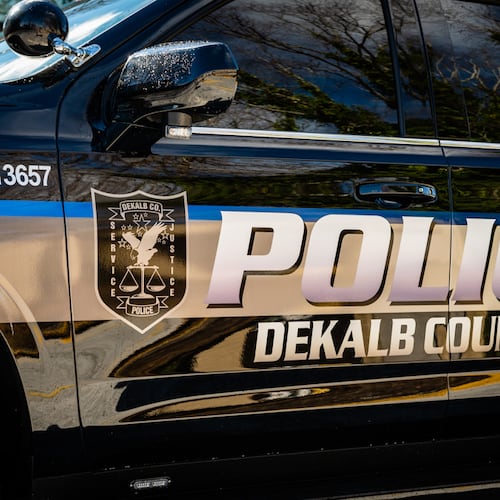Code yellow. Code orange. Code red. These are smog alert levels -- the all too familiar phrases we Atlantans have heard during the summer months. Believe it or not we are already one month into smog season here in Atlanta and thankfully we have not yet had a smog alert day. But, rest assured they are coming. In fact, this year we might see more than years past as the EPA has changed the standards on what qualifies for a smog alert day.
According to the Georgia Environmental Protection Division the threshold for what qualifies as a smog alert day was lowered for 2016. The Air Quality Index has changed. In 2015, 60 parts per billion of ozone in our air would qualify for a code yellow smog alert day. Now the threshold has dropped to 55 ppb.
The good news is that the air quality in Georgia has steadily improved every year since 2000 which was the low point in our state in terms of air quality.
So what exactly do smog alert days mean for commuters? Drivers are urged to carpool, telecommute, combine trips and drive during off-peak hours during smog alert days. The DOT also suggests to "plan the use of gas-powered lawnmowers, blowers, edgers, chainsaws, and other motorized equipment for cooler evening hours. Refuel vehicles at dusk during cool hours.
While some of those restrictions seem somewhat annoying, it pales in comparison to what commuters are currently dealing with in Mexico City, Mexico. Despite improving air quality in the past decade, this spring Mexico City is enduring some very heavy levels of ozone in it’s air. As a result, the government issued its first “ozone-alert” in almost 14 years. More alerts occurred in April and May. To combat the alerts, the government issued driving restrictions for commuters in Mexico City. Between April and June, every car in Mexico City must be kept off the road at least one day Monday through Friday and at least one Saturday per month. Later alerts required 40 percent of vehicles to be removed for the roads for up to three days a week.
The Georgia EPD states that in Georgia, ozone season occurs between April and September since hot sunny days can intensify the creation of ozone. During these months, a team produces a daily ozone pollution forecast for metro Atlanta and Macon, and includes the ozone forecast in the daily "smog alert" using the color coded Air Quality Index.
Ground level ozone is the cause for concern for citizens of Georgia. The higher the concentration, the worse or more severe the smog alert level all the way up to hazardous level when the air quality is a risk for everyone.
What do smog alerts mean for people who breathe in Atlanta? According to the Georgia EPD "Breathing in ground-level ozone can trigger a variety of health problems, including chest pain, coughing and throat irritation. It can worsen bronchitis, emphysema and asthma. Ground-level ozone also can reduce lung function and inflame the linings of the lungs. Repeated exposure may permanently scar lung tissue. Even small amounts in the air can have harmful effects."
Hopefully we will continue the trend of improving air quality here in Atlanta and we never have to resort to the restrictions taken in Mexico City.
The Air Quality Scale used in Atlanta: To view this as a picture with colors, click here
"Good" AQI is 0 to 50. Air quality is considered satisfactory, and air pollution poses little or no risk.
"Moderate" AQI is 51 to 100. Air quality is acceptable; however, for some pollutants there may be a moderate health concern for a very small number of people. For example, people who are unusually sensitive to ozone may experience respiratory symptoms.
"Unhealthy for Sensitive Groups" AQI is 101 to 150. Although general public is not likely to be affected at this AQI range, people with lung disease, older adults and children are at a greater risk from exposure to ozone, whereas persons with heart and lung disease, older adults and children are at greater risk from the presence of particles in the air.
"Unhealthy" AQI is 151 to 200. Everyone may begin to experience some adverse health effects, and members of the sensitive groups may experience more serious effects.
“Very Unhealthy” AQI is 201 to 300. This would trigger a health alert signifying that everyone may experience more serious health effects.“Hazardous” AQI greater than 300. This would trigger a health warnings of emergency conditions. The entire population is more likely to be affected.
About the Author
Keep Reading
The Latest
Featured

